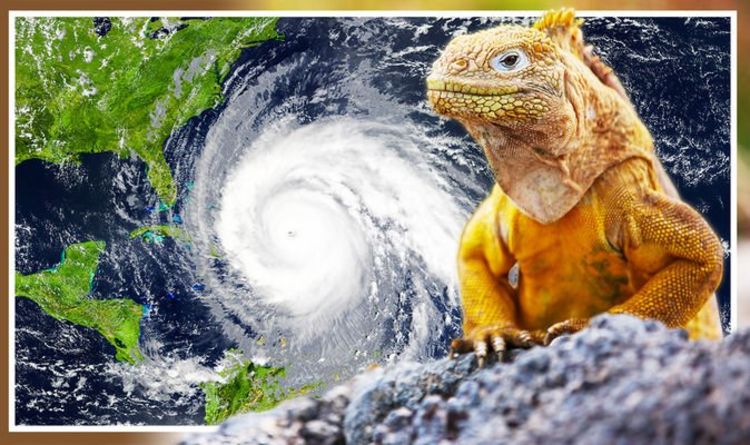Frozen iguanas fall from trees in Florida and appear to be dead
We use your sign-up to provide content in ways you’ve consented to and to improve our understanding of you. This may include adverts from us and 3rd parties based on our understanding. You can unsubscribe at any time. More info
The scaly lizards, as big as 50cm long, have been filmed dotted around an area in what some people have labelled “raining reptiles.” People in parts of Florida, US, have been told to be careful with temperatures beginning to plummet across the country.
The usually baking state is turning very cold – and that’s bad news for some of its inhabitants.
Iguanas sleep in trees and with parts of the day still warm in Florida, they continue to climb high to get 40 winks.
But when it suddenly turns cold their bodies become rigid, and then inevitably fall from the branches.
Thankfully even after a tumble, the cold-stunned creatures recover quickly – and locals have been urged to let them be if they do slip.
“They slow down or become immobile when temps. drop & could fall from trees, but they are not dead. Don’t approach.
“Once the sun is out, they will move.”


Emily Maple of the Palm Beach Zoo said last year: “They’re kind of stuck in a place like the tin man. They can’t move.
“They’ll slow their breathing down very slow and in some cases, they’ll fall out of trees.”
But it appears that the iguanas are getting acclimatised to the chilly weather that they are experiencing in the winter.
Expert Steve Kavashansky calls himself the “iguana buster” and he says they are getting more used to the cold.
“Iguanas are definitely getting acclimatised, they’re getting used to the cooler weather – unlike us in South Florida!” he said.
“You wouldn’t see that a couple of years ago. You really have to have a couple of days in the 30s for them to die from the cold.”


But he says the animals are causing issues to the environment.
“They are just destroying the Florida ecosystem,” Kavashansky added.
“They are not natural in Florida. They have no natural predators in Florida.”
Although these iguanas were not actually falling from clouds, the phenomenon of falling beasts is real.
“Animal rain” is a real weather phenomenon that happens when small animals get swept up in waterspouts or updrafts, and then fall to Earth with raindrops.
Reported rains of bats, fish, snakes, birds, frogs, and jellies stretch back for centuries.
DON’T MISS:
Mystery dog illness warning after pet DIES [REPORT]
French open eyes to EU shambles [ANALYSIS]
Woman tries to ‘purchase child’ from mother [INSIGHT]

The phenomena most associated with animal rain are waterspouts, although many meteorologists are sceptical that waterspouts can actually cause animal rain.
Waterspouts form as violent storm clouds swirl above a large body of water.
These clouds form a tornado-like whirlwind (called a vortex) that dips into the ocean, lake, or pond.
Waterspouts can spin up to 160 kilometers per hour (100 miles per hour) and may pull up small objects in their funnel—water, pebbles, and small aquatic animals.
While updrafts can sweep up much larger animals than waterspouts—travelling birds and bats, as well as frogs, snakes, and insects.

As waterspouts and updrafts move over land, they lose their swirling energy.
The storm clouds that formed the waterspouts are forced to dump their heavy loads.
The heaviest objects are dumped first, and the lightest objects (usually simple raindrops) are dumped last.
This explains why reports of animal rain usually describe only one type of animal raining down.
A cloud will dump all objects of similar weight at the same time—fish (heavy), followed by insects (lighter), followed by rain (lightest), for example.
Source: Read Full Article
